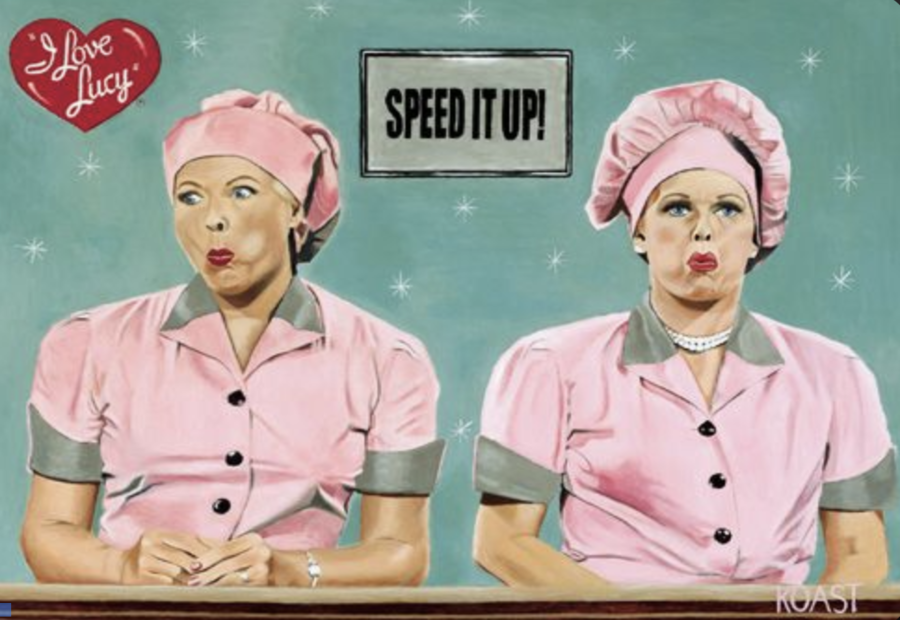
Seventy‑four years after its premiere in October 1951, I Love Lucy remains one of the most beloved sitcoms on the planet. Driven by Lucille Ball’s fearless physical comedy and Desi Arnaz’s magnetic presence, the show still resonates today—not just as a nostalgic relic, but as a blueprint for universal humor and an early celebration of an independent, ambitious woman. Here’s why Lucy Ricardo’s antics transcend generations and cultures.
Timeless Comedy: Iconic Gags That Never Grow Old
-
The Chocolate Factory Conveyor Belt
Lucy and Ethel’s frantic scramble to wrap chocolates on a speeding assembly line is the quintessential physical‑comedy sketch. The mix of impeccable timing, over‑the‑top expressions, and escalating chaos taps into a pure, instinctual humor that needs no translation. Every time the conveyor belt speeds up, viewers feel that same delightful panic—whether they’re eight or eighty. -
Lucy’s “Drunken” Routine
In the “Lucy Hires an English Tutor” episode, Lucy pretends to be inebriated to learn how to speak “properly.” Her exaggerated sways, slurred words, and half‑closed eyes deliver a masterclass in comedic commitment. Even in an era when television was bound by strict content guidelines, Ball pushed boundaries—setting a standard for sitcom hijinks that countless comedies still follow. -
Flamenco Dance Scene
Tasked with learning flamenco, Lucy turns a serious cultural dance into a hilarious calamity. Her high kicks, wildly swinging arms, and impromptu footwork misfires showcase how physical humor can honor—and playfully subvert—traditional art forms. This scene in particular highlights Ball’s gift for transforming any situation into a laugh‑out‑loud spectacle.
Lucy as a Proto‑Feminist Heroine
Beyond the laughs, Lucy Ricardo represented a woman with ambition, intelligence, and agency—rare traits for TV wives in the 1950s. She:
-
Yearned for Center Stage: Lucy constantly sought new experiences—auditioning for Broadway, starting her nightclub act, even piloting a ship—all to break free of domestic monotony.
-
Balanced Career and Family: By weaving Lucille Ball’s real‑life pregnancy into the show, I Love Lucy normalized working motherhood decades before it became a mainstream topic.
-
Challenged Stereotypes: Whether negotiating with Ricky or outsmarting Fred and Ethel, Lucy demonstrated that a woman could be both loveable and formidable, belying the era’s narrow gender roles.
Her tenacity and charm made her a role model long before second‑wave feminism—women today still see a version of themselves in Lucy’s playful defiance.
Modern Resonance: Memes, Streaming, and Global Fandom
Even in the age of TikTok and Netflix, Lucy’s legacy thrives:
-
Viral Clips & GIFs: Short memes of Lucy’s chocolate‑belt panic or her tumbles around the apartment circulate constantly on social media, proving that physical comedy remains shareable content.
-
Streaming Platforms: Classic episodes reach new audiences every day, transcending language barriers with subtitles or dubbed versions from Tokyo to São Paulo.
-
Pop‑Culture References: From animated cameos in The Simpsons to fashion runways inspired by her polka‑dot dresses and red wigs, Lucy’s visual iconography endures.
This continued relevance underscores how the core of great comedy—human foibles, sincere emotion, and impeccable timing—never goes out of style.
Call to Action
Which I Love Lucy episode still makes you laugh until you cry? Tag the friend you usually binge-watch with, and tell us your favorite Lucy moment in the comments!
